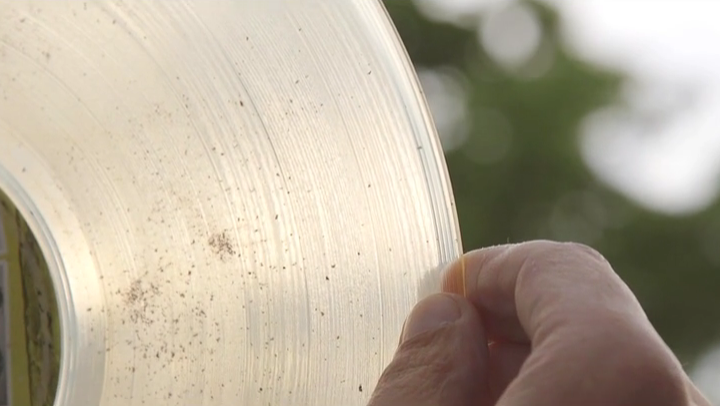It’s not uncommon to have a knee jerk response to Bob Thiele and George David Weiss’ now-ubiquitous “What a Wonderful World.”
The quality of your reaction is likely determined by your worldview.
A misty-eyed bride-to-be browsing tunes for her upcoming reception’s father-daughter dance will not be coming at things from the same angle as the directors of Bowling for Columbine, Good Morning, Vietnam, and—unexpectedly—Madagascar.
The first version, sung by an aging Louis Armstrong, remains definitive, though it was dismissed at first by record execs, who hoped for another rollicking chart topper along in the “Hello, Dolly!” model.
As Jack Doyle notes on the Pop History Dig, Armstrong dug the song, and performed it often, hoping to strike a chord of hope and optimism during a period of great civil unrest:
Seems to me it ain’t the world that’s so bad but what we’re doing to it, and all I’m saying is: see what a wonderful world it would be if only we’d give it a chance. Love, baby, love. That’s the secret…
The song’s white authors shared his view, and hoped his crossover appeal would promote feelings of racial harmony on all sides of the record-buying public. It was a hit in the UK, but a slow starter in the US, not really catching on until its appearance on Good Morning, Vietnam’s soundtrack (1987).
Half a century after its release, “What a Wonderful World” has entered the pantheon, as anyone with a television and ears can attest.
Its simple lyrics involving roses, rainbows, and babies have resulted in a number of hideously syrupy covers. With so many choices, it’s almost impossible to pick a least-favorite. Their gooeyness does a disservice to the power of the original.
What’s so poignant about the performance, above, are the moments where the darkness cuts through the treacle, ever so briefly. Check out Armstrong’s expressions at :25, :50, and 1:49, and interpret it how you will.
It’s worth noting that the nightly news was monopolized by reports of the war in Vietnam and the struggle for civil rights at home. Armstrong’s health was in decline. The realities of his own New Orleans childhood were far more complex than the crayon-bright vision painted by the lyrics.
A montage of bombings and peaceful demonstrators being stomped underfoot would’ve seemed premature at such an early stage in the song’s history, so Armstrong smiled through, as he laid the groundwork for later performers’ layered interpretations. Some of the ones we find most compelling are below:
Nick Cave & the Pogues’ Shane MacGowan unhappiness has them reeling off their stools, even as they shake hands to comic effect.
Ministry’s sinister take opens with a lovely lonely piano that, like the listener’s eardrums, gets plowed under by a massive attack of industrial noise.
Joey Ramone had already been diagnosed with the cancer that cut his life short when he recorded his version, that ends on a note of unabashed pop-punk joy.
Related Content:
The Cleanest Recordings of 1920s Louis Armstrong Songs You’ll Ever Hear
Ayun Halliday is an author, illustrator, theater maker and Chief Primatologist of the East Village Inky zine. Follow her @AyunHalliday.



